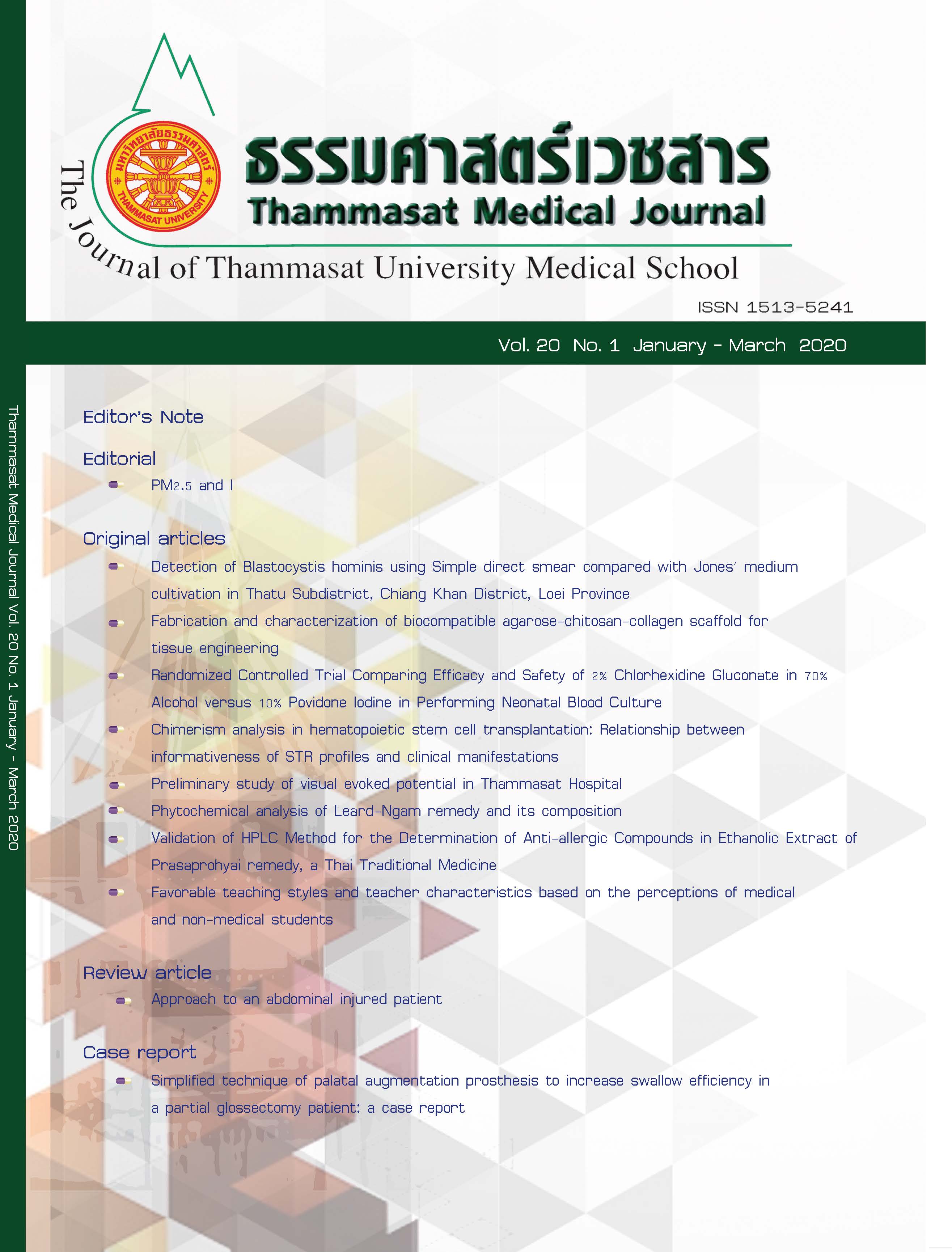Fabrication and characterization of biocompatible agarose- chitosan-collagen scaffold for tissue engineering
Keywords:
biomaterial, scaffold, tissue engineeringAbstract
Introduction: The biocompatible scaffold which promotes cell proliferation is necessary for the development of tissue engineering. The objective of this study was to fabricate and characterize a biocomposite scaffold using natural material, agarose-chitosan-collagen (AG-CH-CL) via freeze-drying method. To avoid cytotoxic effects associated with the chemical cross linker, the freeze-drying process was performed without adding the cross linker reagent.
Methods: The AG-CH-CL scaffold was synthesized using a freeze-drying method. The natural polymers were used in different concentrations to optimize the most desirable scaffold. SEM was used to determine the pore size of the scaffold. Physical functional as well as water uptake ability, degradation rate and chemical group also evaluated. In addition, MTT assay was used to examine biocompatible of the scaffold by growing fibroblast on the scaffold for 4 weeks and the histological structure of the cell-scaffold were determined using H&E staining.
Result: The scaffold made from AG-CH-CL in 3:1:0.5 proportions were generating the most desirable properties, which consisted of three dimensional interconnected porous structures with pore size diameter around 184 µm. The water uptake ability of the scaffold was over 85% and the degradation rate at 4 weeks was only 5%. In addition, the scaffold can apply for supporting human fibroblast culture, showing their low cytotoxicity.
Conclusion: Our findings provide the information for synthetic method of scaffold fabrication that must be accompanied by generating scaffold which contains natural material and avoids the use of toxic reagent. This study indicates potential of biomaterial scaffold for tissue engineering.



